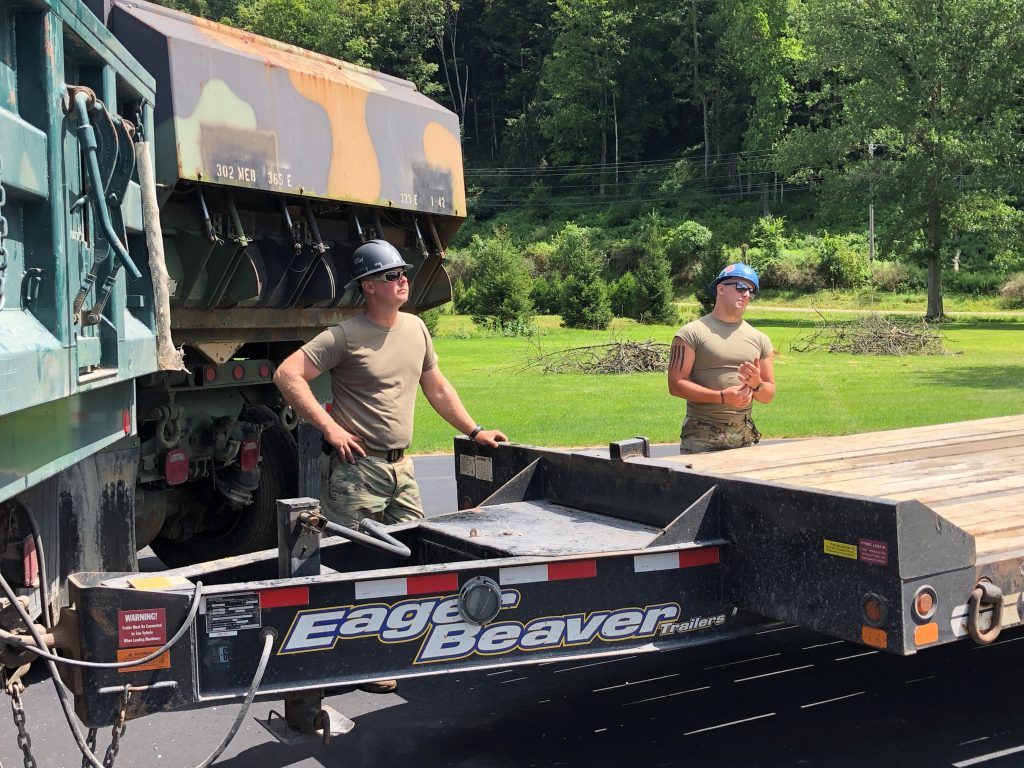Approximately 35 members of the Army Reserve’s 333rd Engineering Company based in Reading, PA arrived in Proctor on Sunday, August 1, 2021. The unit trains to build roads, airstrips, and bases, but will spend their summer training removing an earthen berm along Plunketts Creek.
The project began nearly 3 years ago when the Pennsylvania Game Commission was evaluating management needs on State Game Lands 134. PGC personnel recognized that the berm was no longer needed since propagation activities had ended. They saw the opportunity to reconnect the Creek to its floodplain and recreate the habitat that once would have been all along the stream.
Around the same time the Northcentral Pennsylvania Conservancy had received funds for a project to help improve or maintain water quality in Lycoming County. The site along Plunketts Creek seemed idea. The stream is already designated a High Quality-Cold Water Fishery with a naturally reproducing trout population (the best of the best), but there was concern the water quality could be changing due to the stream becoming wider and more sediment entering the system from sliding hillsides and streambanks.
As the Pennsylvania Game Commission and Northcentral Pennsylvania Conservancy were looking at options for the site at State Game Lands 134, they learned about the military’s Innovative Readiness Training program. The program allows communities to submit potential projects that could be used as a training exercise.
Over the next couple of weeks the 333rd will be working with Pennsylvania Game Commission employees from the Food and Cover program to remove the berm and improve Camp Mountain Road. The Unit is getting experience in a real world situation, the Pennsylvania Game Commission is getting help to improve the State Game Lands along Plunketts Creek and improve access to State Game Lands above the Creek, the residents nearby and downstream should receive less damage during high water events, and Plunketts Creek will be able to better access its floodplain.
August 1, 2, and 3 were spent getting equipment on site, jockeying equipment on the site, installing the silt sock for erosion and sedimentation control and building a wash rack to be able to rinse mud and dirt off the trucks and equipment before it leaves the site. August 4 the work will begin to remove the earthen berm, and it’s scheduled to wrap up on August 20.


